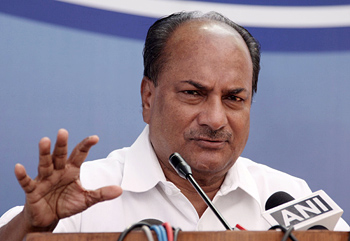INDIAN ARMED FORCES CHIEFS ON
OUR RELENTLESS AND FOCUSED PUBLISHING EFFORTS

SP Guide Publications puts forth a well compiled articulation of issues, pursuits and accomplishments of the Indian Army, over the years

I am confident that SP Guide Publications would continue to inform, inspire and influence.

My compliments to SP Guide Publications for informative and credible reportage on contemporary aerospace issues over the past six decades.
Technology Perspective & Capability Roadmap 2013
2012-2027: What the Indian forces need over 15 years

The Integrated Defence Staff has released an updated Technology Perspective & Capability Roadmap 2013, the second in two years, that covers the expansive wish-list of technologies and capabilities that the armed forces intend to acquire either indigenously or from abroad in the course of the next 15 years. It is, in effect, the unclassified version of the long-term integrated perspective plan (LTIPP) that seeks to synergise requirements and capabilities between the three armed forces and the Indian Coast Guard in a manner that lends to jointmanship, efficiency, lethality and economy of resources.
The document lays down its intended purpose thus: Induction of new weapon systems is cost and time intensive. Building complex platforms like ships, submarines, tanks and fighter jets has a long lead time which is constantly challenged by the race to keep-up with the relentless march of technology. It is therefore imperative that the long-term requirement of capability be identified and understood for appropriate technology to be developed indigenously. The TPCR intends to provide the industry an overview of the direction in which the armed forces intend to head in terms of capability over the next 15 years, which in turn would drive the technology in the developmental process.
It is, in effect, a reference guide of interest to industry, developers, solution providers and vendors both in India and abroad.
"Our defence forces require timely and cost effective acquisition of defence equipment to enable them to meet any challenge to country’s security. If they have to effectively meet these challenges, we must adopt a holistic approach towards defence acquisition right from the planning to final disposal of the weapon system without compromising on transparency, fairness and probity at any level," writes Defence Minister A.K. Antony in the preamble to the exhaustive new document released recently by the Ministry of Defence.
In the words of the MoD, this is a document attempting to create awareness in industry of the capability and technology requirement of the armed forces, and will be regularly updated as and when plans are revised and would therefore attempt to provide the latest inputs on the Technology Perspective and Capability Requirement of the armed forces over a 15-year period. Interestingly, the MoD stresses that it hopes that this would address the industry’s concern about a level playing field. "On the part of industry, it is expected that this document will encourage them to put forth firm proposals for participating in the self-reliance process in terms of R&D, production and product support commitments. It is also envisaged that the industry would be proactive and in future suggest options to the armed forces vis-à-vis their capabilities and available technologies. Taking a cue from the information disseminated through this document, the industry may undertake capability and capacity building so as to cut down on time period for the acquisition cycle," it offers.
The document also lays marked emphasis on the need to indigenise and make Indian products for the armed forces the norm. It indicates that the Indian armed forces have identified technologies required to be inducted in development of future capability. The Defence Procurement Procedure has articulated the means of obtaining these either through the ‘Buy (Indian)’, Buy (Global), ‘Buy and Make’, ‘Make’ or the newly introduced ‘Buy and Make (Indian)’ categories. The country has had to perforce resort to ‘Buy (Global)’ option in the past due to a host of reasons, which has been an expensive proposition. Over-reliance on imported hardware has the potential to compromise on the country’s defence preparedness in times of crisis, through imposition of various technology denial regimes by the supplier. Self-reliance is, without a doubt, the spirit of the document.





